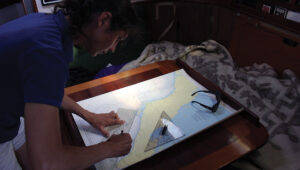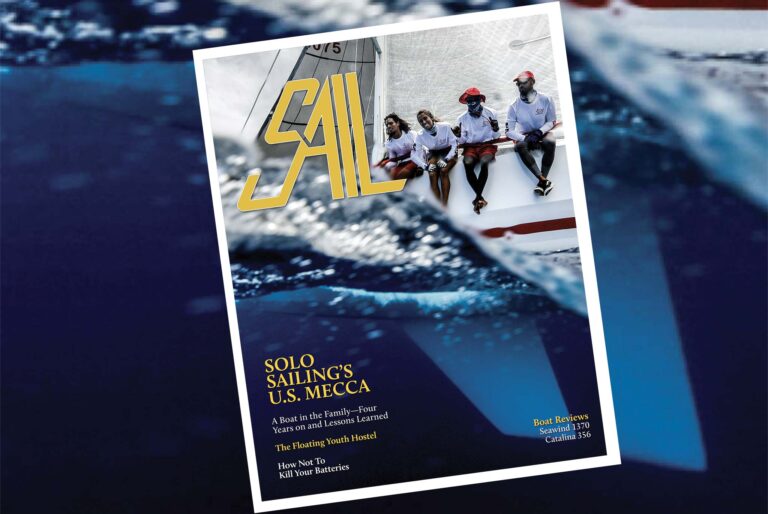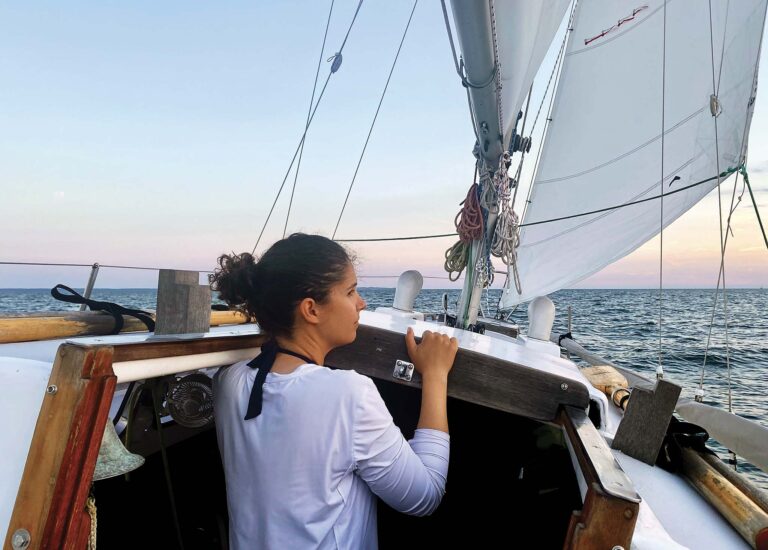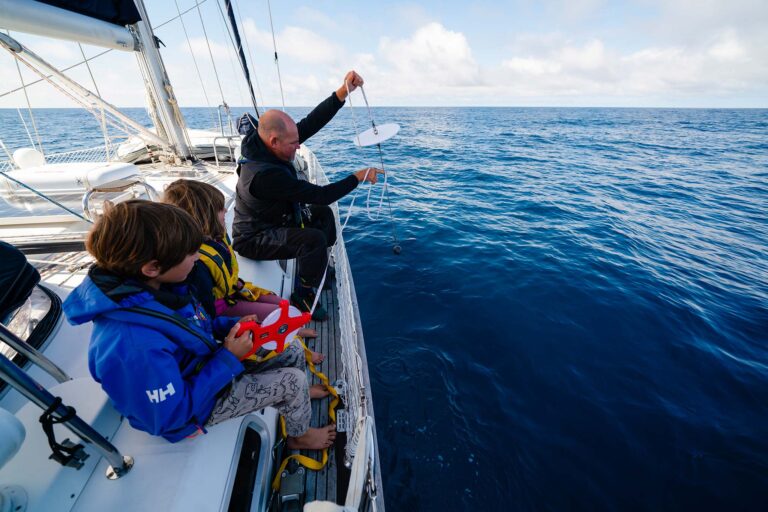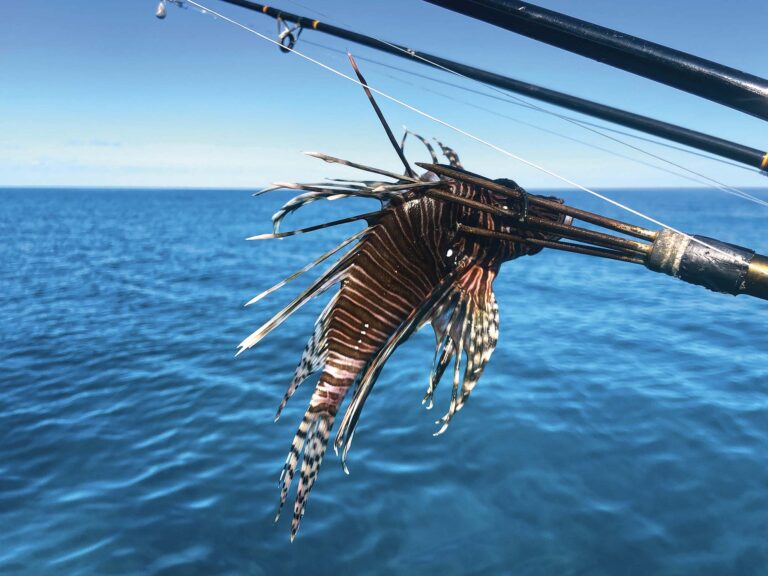In the marina
Backing up: Maneuvering astern down a narrow marina corridor can be frightening, especially when propeller walk and wind on the bow combine to thwart your efforts. We submitted ourselves to this ‘torture test’ on our day out and the thruster allowed us to keep our 10-ton boat firmly in line even before she gathered enough way for the rudder to take charge. This boat steers well astern once moving smoothly, but it was obvious that on the sort of boat that doesn’t want to behave, a thruster would make all the difference. If we’d needed to keep way to a bare minimum on our boat, we’d have been lost without it.
Short turns: Not many single-screw vessels can turn in their own length using the rudder alone. The traditional answer is to exploit propeller walk. Power ahead with the rudder hard over, then, before way is properly gathered, reverse the gearbox and let the propeller screw the stern into the turn. No need to move the rudder, because once she starts to take on stern way, it’s a long burst ahead again, and so on until she’s round. A skilled operator can spin a suitable boat in a length and a half like this, but a crosswind may not help. Furthermore, you can only turn the way the propeller wants you to go. The thruster shoved my test boat round in short order in either direction. All I had to do was control my fore-and-aft position with the main engine as required.
Getting into an impossible berth: There’s no textbook answer to this, but once you’ve mastered a thruster, it can make a whale of a difference in all sorts of situations. A month or so back I was obliged to back a massive great boat into a slip straight out of Old Nick’s Manual of Seamanship. I really don’t know how I’d have done it without the thruster shoving the bow to where nature never intended it to go.
Lateral thinking: A bow thruster can turn all your ideas about boat handling on their heads, because of the way it defies nature. Creative thinking on the water can confer all manner of unimaginable benefits. Here’s one. Last autumn, I found myself aground on a muddy lee shore inside a harbor. There was no danger and the tide was rising, but all my life I’ve known the chances of sailing out of this scenario are absolute zero.
They’re not much better under power. The boat simply drifts further up the bank as she floats, and any effort to steer to weather is frustrated because she blows to leeward again before the keel can get a grip. I therefore duly laid out a kedge and we hauled ourselves head to wind before cranking up the power to drive her off. A major hassle, of course, on a cold, windy day.
Ironically, I never thought of deploying the bow thruster, which was sitting untroubled in its tunnel up forward. I could have waited quietly for the tide, then, when the boat showed signs of floating, simply blasted the bow upwind and cruised away into deep water. Oh, for the benefit of hindsight…
SAIL contributing editor Tom Cunliffe owns a 40’ gaff cutter but sails anything he can get his hands on.


